Abstract
Conditioning to one member of a compound stimulus can be blocked by the presence of a second member to which the response was previously conditioned. This account of selective stimulus control can be used to explain the finding that pictures inhibit learning of written words if the relevant pictures and their verbal equivalents have been paired previously. We tested the blocking explanation of the picture-word problem with 8 mentally retarded students. Following baseline, each student was resented daily with four conditions in an alternating treatments design. In Condition A (blocking), a picture was presented alone and then was followed by the presentation of a picture and written word compound stimulus; in Condition B (blocking/control), a word was presented alone; in Condition C(blocking minimized), a word was enhanced in size and presented alone followed by the word and a picture; and, in Condition D (blocking minimized/control), the enhanced word was presented alone. Each stimulus was presented for 15 s. All students had the lowest percentage of words read correctly in the blocking condition, and all improved when blocking was minimized. Six of 8 students reached their highest percentage of words read correctly in the two control conditions when the words were presented as a single stimulus without pictures. These results indicate that pictures inhibit some students' learning of new words; this may be due to the blocking of conditioning to written words by prior conditioning to pictures.
Full text
PDF
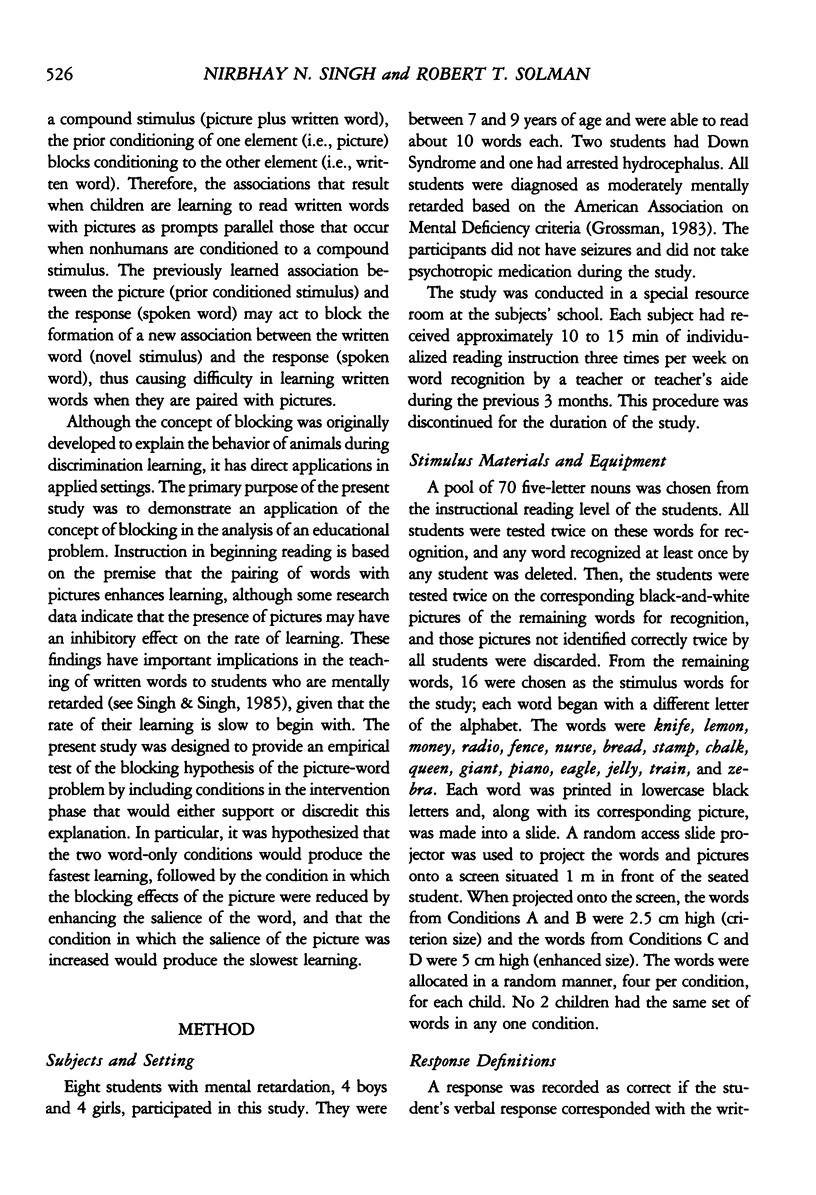
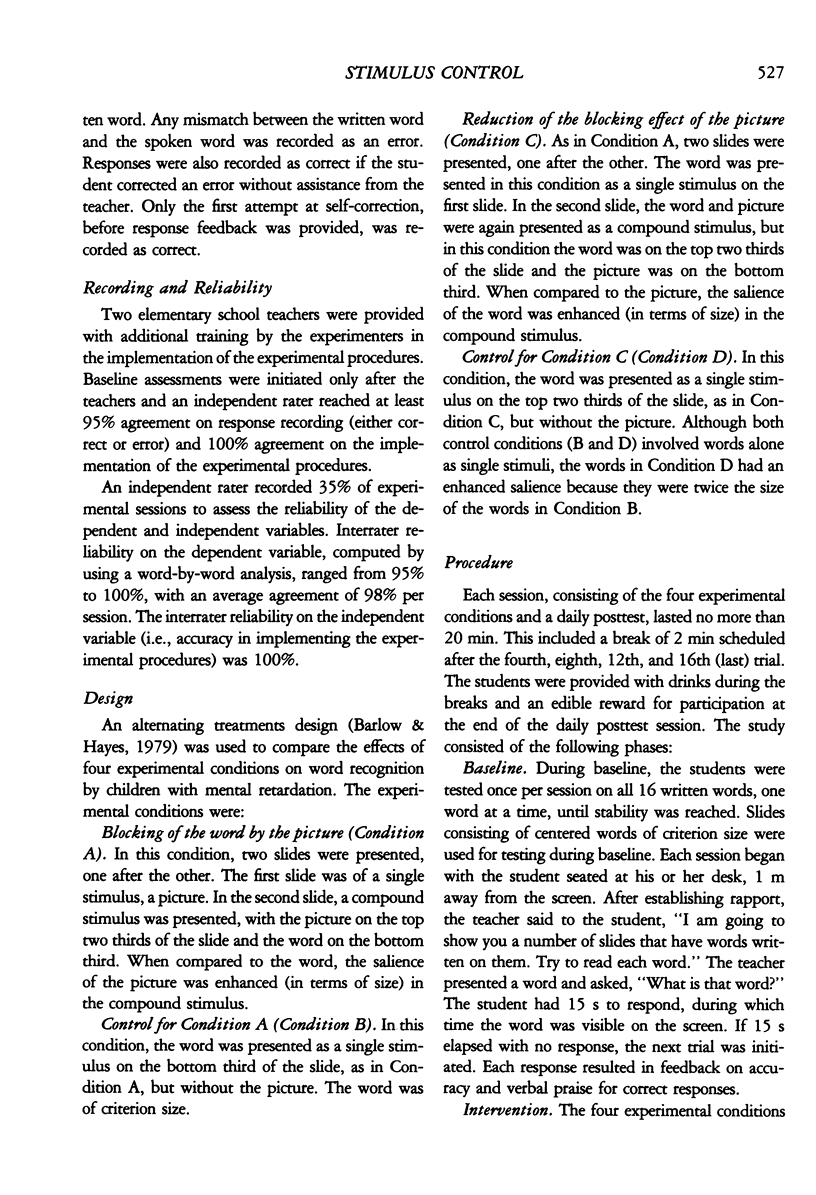
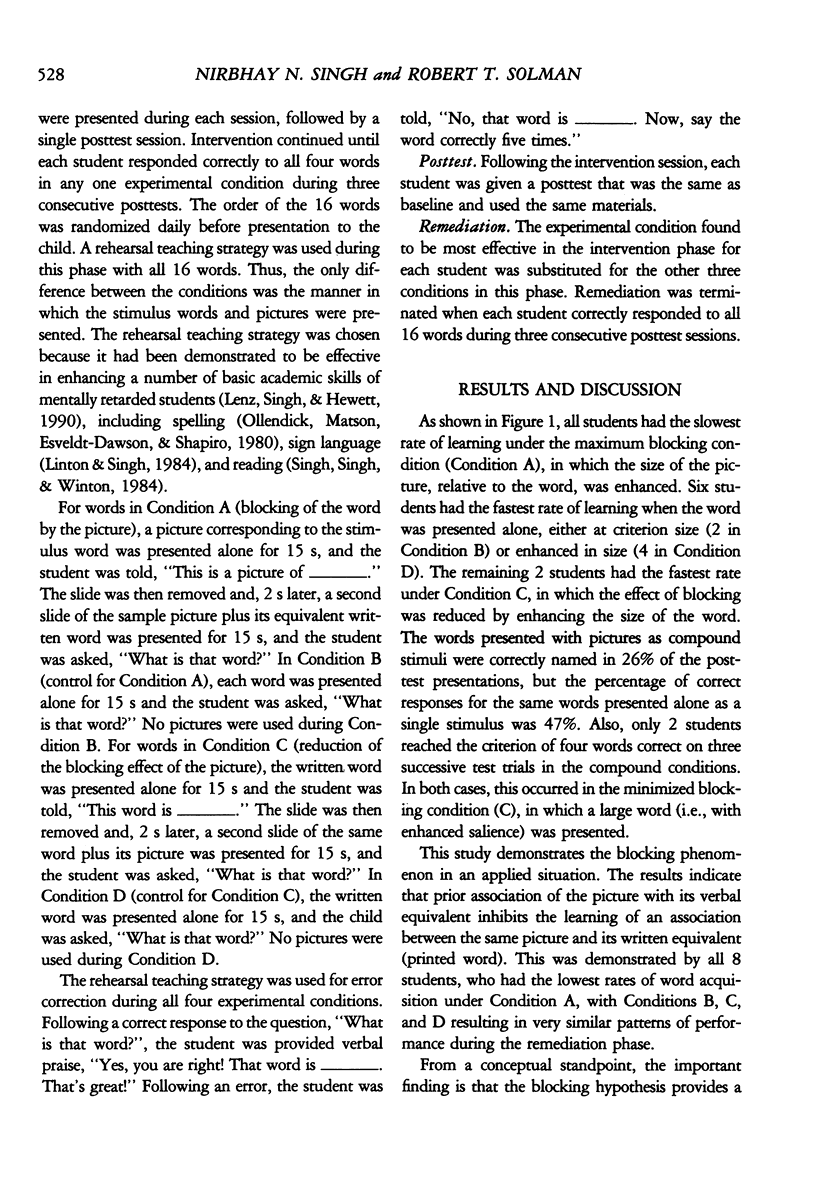
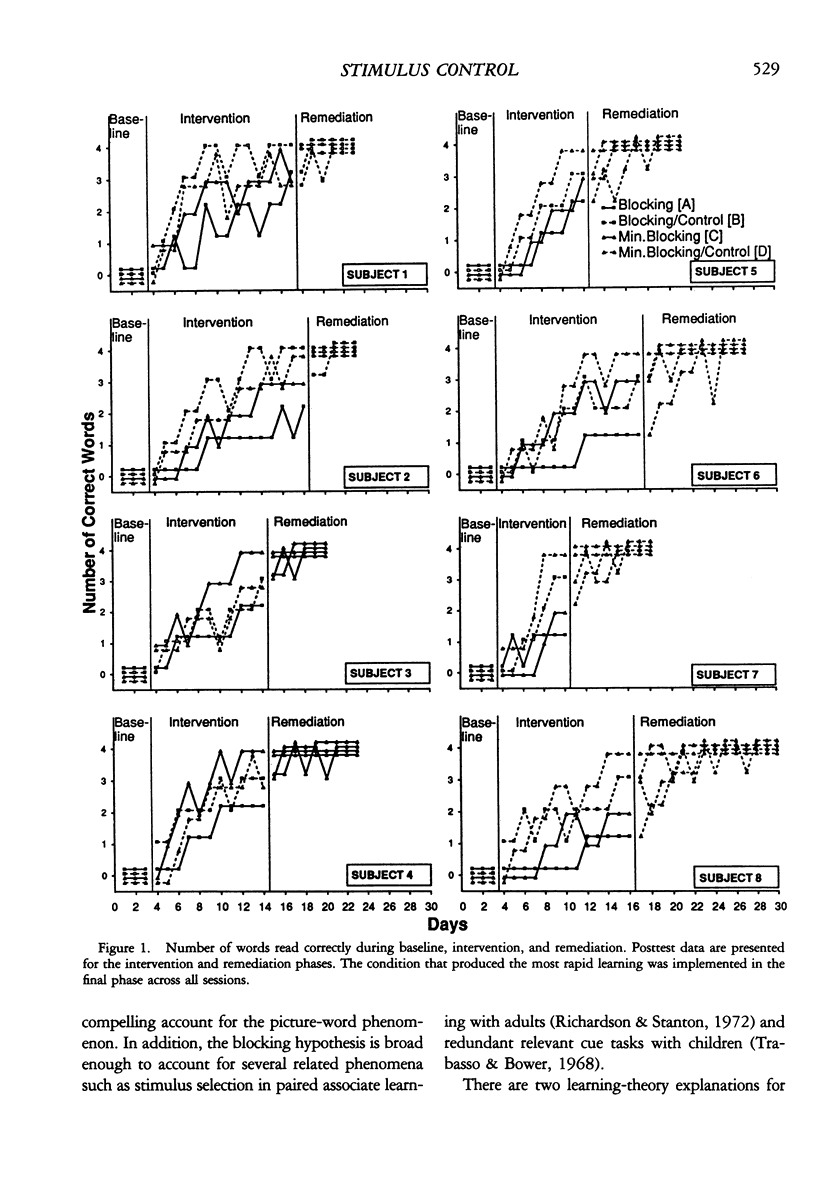
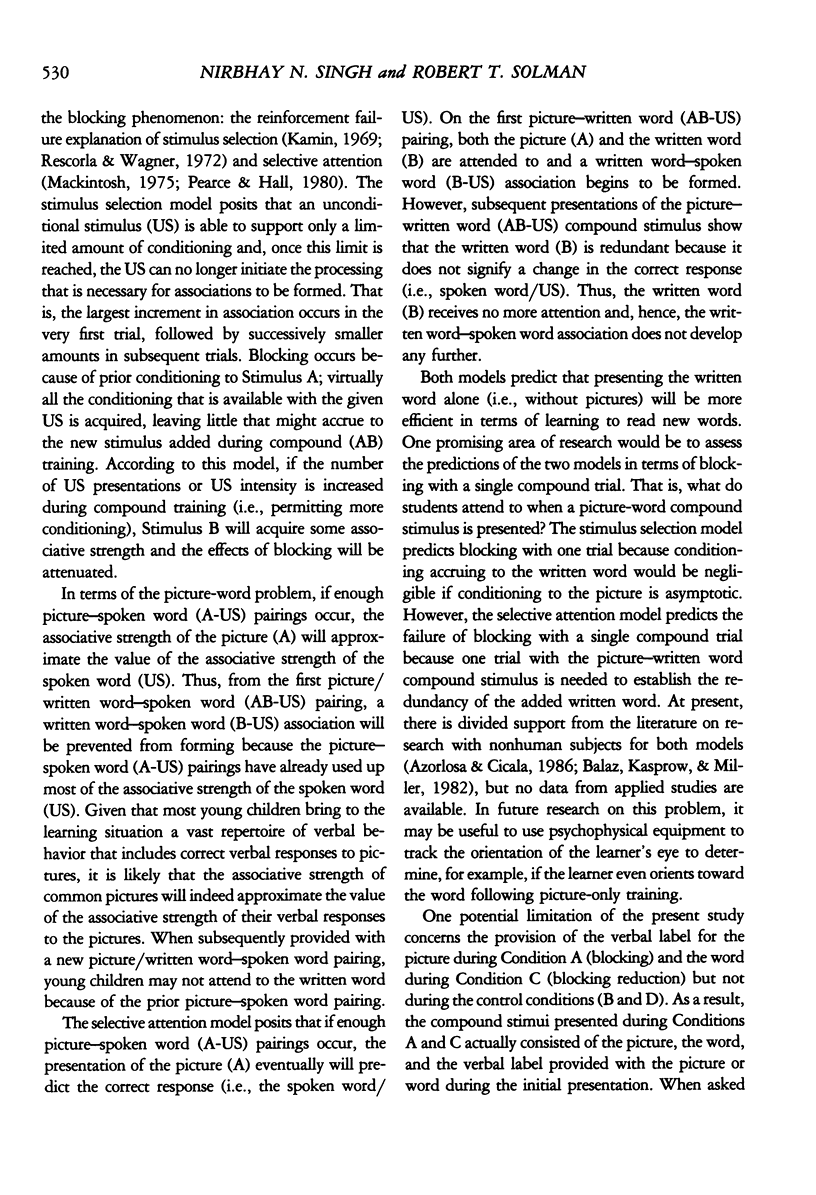
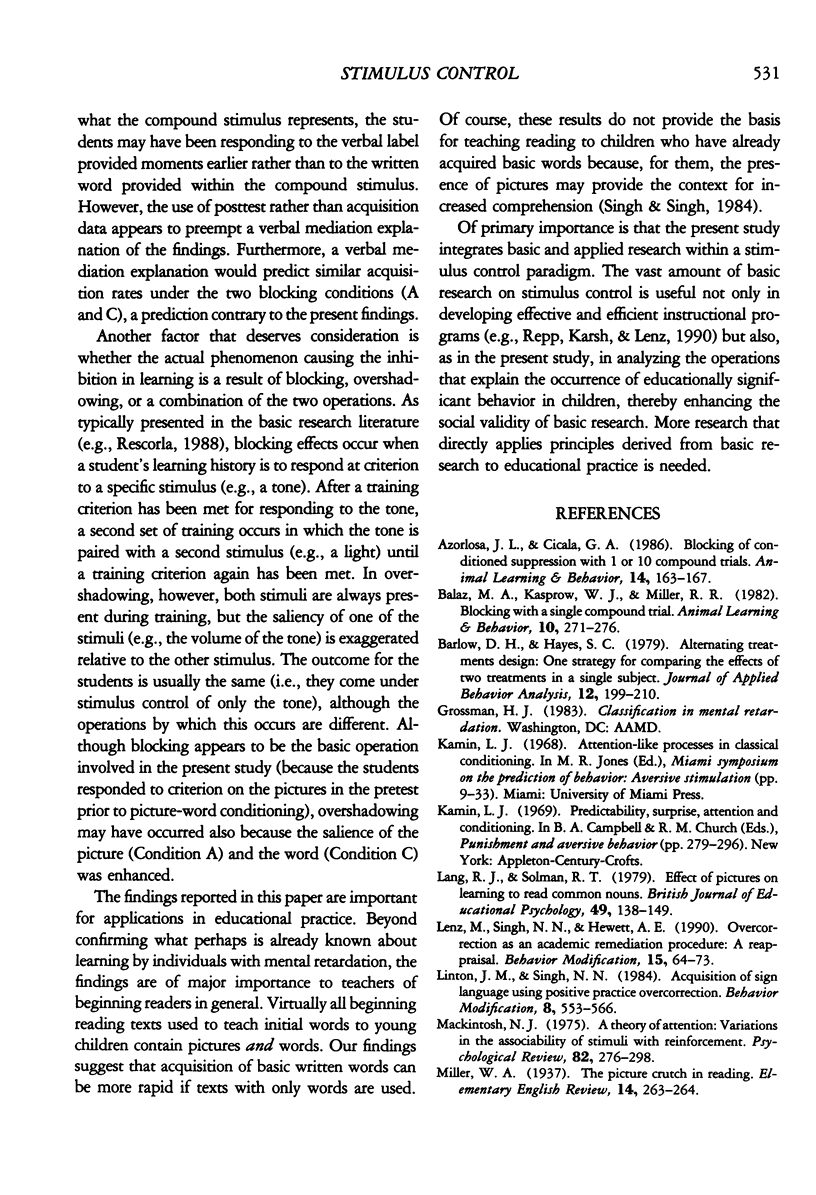

Selected References
These references are in PubMed. This may not be the complete list of references from this article.
- Barlow D. H., Hayes S. C. Alternating treatments design: one strategy for comparing the effects of two treatments in a single subject. J Appl Behav Anal. 1979 Summer;12(2):199–210. doi: 10.1901/jaba.1979.12-199. [DOI] [PMC free article] [PubMed] [Google Scholar]
- Lenz M., Singh N. N., Hewett A. E. Overcorrection as an academic remediation procedure. A review and reappraisal. Behav Modif. 1991 Jan;15(1):64–73. doi: 10.1177/01454455910151004. [DOI] [PubMed] [Google Scholar]
- Ollendick T. H., Matson J. L., Esveldt-Dawson K., Shapiro E. S. Increasing spelling achievement: an analysis of treatment procedures utilizing an alternating treatments design. J Appl Behav Anal. 1980 Winter;13(4):645–654. doi: 10.1901/jaba.1980.13-645. [DOI] [PMC free article] [PubMed] [Google Scholar]
- Pearce J. M., Hall G. A model for Pavlovian learning: variations in the effectiveness of conditioned but not of unconditioned stimuli. Psychol Rev. 1980 Nov;87(6):532–552. [PubMed] [Google Scholar]
- Repp A. C., Karsh K. G., Lenz M. W. Discrimination training for persons with developmental disabilities: a comparison of the task demonstration model and the standard prompting hierarchy. J Appl Behav Anal. 1990 Spring;23(1):43–52. doi: 10.1901/jaba.1990.23-43. [DOI] [PMC free article] [PubMed] [Google Scholar]
- Rescorla R. A. Pavlovian conditioning. It's not what you think it is. Am Psychol. 1988 Mar;43(3):151–160. doi: 10.1037//0003-066x.43.3.151. [DOI] [PubMed] [Google Scholar]
- Samuels S. J. Attentional process in reading: the effect of pictures on the acquisition of reading responses. J Educ Psychol. 1967 Dec;58(6):337–342. doi: 10.1037/h0020045. [DOI] [PubMed] [Google Scholar]
- Saunders R. J., Solman R. T. The effect of pictures on the acquisition of a small vocabulary of similar sight-words. Br J Educ Psychol. 1984 Nov;54(Pt 3):265–275. doi: 10.1111/j.2044-8279.1984.tb02590.x. [DOI] [PubMed] [Google Scholar]
- Singh N. N., Singh J. Antecedent control of oral reading errors and self-corrections by mentally retarded children. J Appl Behav Anal. 1984 Spring;17(1):111–119. doi: 10.1901/jaba.1984.17-111. [DOI] [PMC free article] [PubMed] [Google Scholar]


